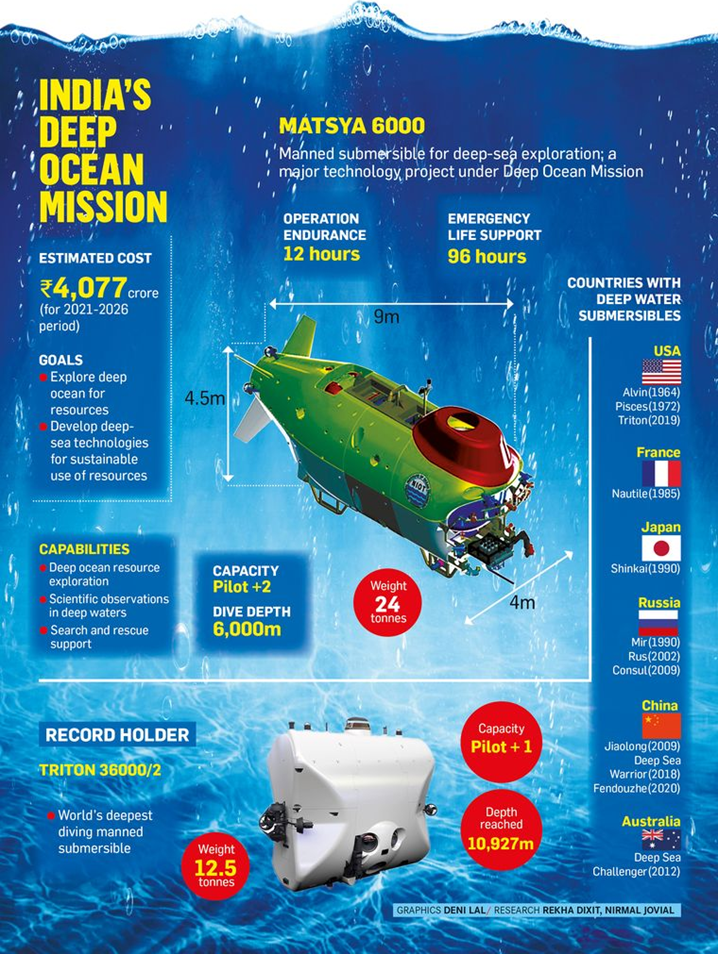- Courses
- GS Full Course 1 Year
- GS Full Course 2 Year
- GS Full Course 3 Year
- GS Full Course Till Selection
- MEP (Mains Enrichment Programme) Data, Facts
- Essay Target – 150+ Marks
- Online Program
- GS Recorded Course
- NCERT- First Ladder
- Polity
- Geography
- Economy
- Ancient, Medieval and Art & Culture AMAC
- Modern India, Post Independence & World History
- Environment
- Governance
- Science & Technology
- International Relations and Internal Security
- Disaster Management
- Ethics
- Current Affairs
- Indian Society and Social Issue
- CSAT
- 5 LAYERED ARJUNA Mentorship
- Public Administration Optional
- ABOUT US
- OUR TOPPERS
- TEST SERIES
- FREE STUDY MATERIAL
- VIDEOS
- CONTACT US
INDIA'S SAMUDRAYAAN MISSION TO STUDY OCEAN BED BY 2025
INDIA'S SAMUDRAYAAN MISSION TO STUDY OCEAN BED BY 2025
14-03-2024
What's the story

- India's Earth Sciences Minister shared exciting news about the country's Samudrayaan mission.
- India should be able to send its scientists to explore the deep sea located 6 km below the sea surface by the end of next year.
- India's Earth Sciences Minister informed that the deep-sea submersible Matsya 6000, designed to carry humans to a depth of 6,000 meters by the end of 2025.
- After review of the project, shallow water trials of Matsya 6000 may take place early this year.
- “When you talk about Samudrayaan, you are now talking about our mission to go about 6,000 meters deep into the ocean, where even light can't reach.”
- “As far as our Matsya 6000, the machine that takes humans in, is concerned, it is on the right track.
- Matsya 6000 is India's first manned submersible
India Is Ready to Join the Group of Elite Countries
- Once the Samudrayaan mission is successfully completed, India will join an elite group of countries with deep-sea crewed mission capabilities.
- Currently, the US, China, Russia, France and Japan have achieved successful deep-sea missions.
- India's entry into this elite group will demonstrate its expertise and capability to operate within such challenging waters.
|
Ministry of Earth Sciences Samudrayaan Mission |
Treasure from the depth: Polymetallic nodules, rich in minerals like manganese and iron. |
Must Check: Best IAS Coaching In Delhi




